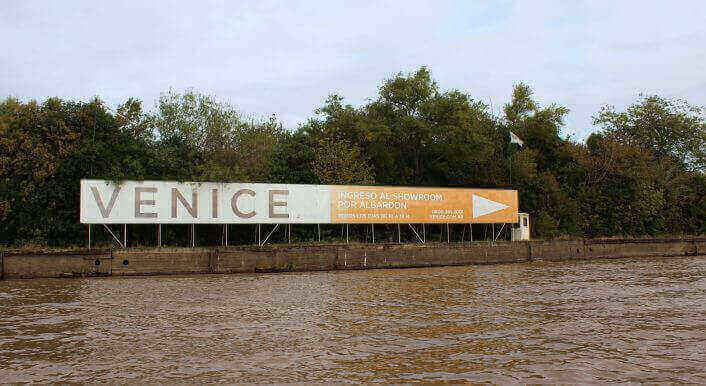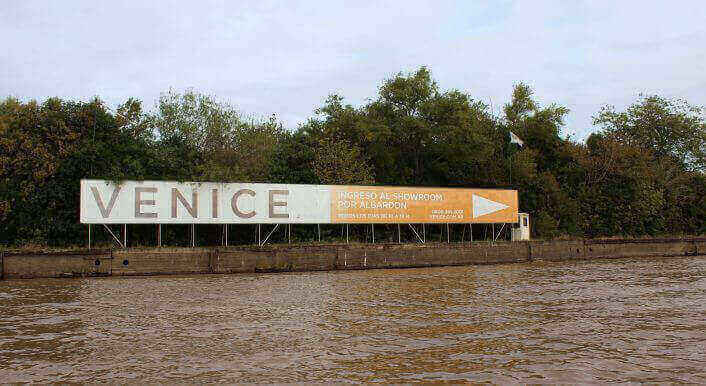European citizens endangered by rising sea levels
Climate change is making the sea level rise along Europe's coasts. But the rising levels vary: 18cm in Nice, 9cm in Copenhagen, both since 1986. In Britain the Medmerry, on the south coast, was the first place to stop reinforcing dykes - returning the land to the sea. Experts say this is a fate awaiting large areas of coastal land in the future.

Inland seas, especially, are “regions that are least prepared for a fluctuating sea level,” says Hans-Martin Füssel, head of climate projects at the European Environment Agency (EEA). His institute is based in Copenhagen. In the Baltic Sea, there have been hardly any floods. “Recently, we had dinner with colleagues at the port of Copenhagen and the Danes said: Where are we going to build a dyke here?” says Füssel. The sea level in front of the capital (LINK) is now around ten centimetres higher than it was 30 years ago.
Mediterranean cities, like Nice, in France, (LINK) or Levkas, in Greece, have already recorded levels that are around 20 to 30 centimetres higher. With climate change, the sea will rise even faster in the future. By 2100 it could have risen between 60 and 80 centimetres, according to data from the IPCC.
In the long term, people in sparsely populated and less protected areas of Europe will have to relocate. Like in Medmerry, southwest of London, which abandoned its dykes, which were constantly being destroyed, and instead allowed 500 hectares inland to be flooded by seawater. The Environment Agency decided that it would rather give in to the pressure of the sea and create a new flood zone in what was a sparsely populated area, than to invest money in higher dykes. So far it is the largest coastal opening in Europe.
The EEA observes on their European maps that overall, urban areas are better protected than rural ones. This is easy to understand. “Which government would give up Hamburg or London?” says EEA expert Füssel.
People living around the North Sea are used to strong tides, and they’ve made provisions for spring tides and storms. “Overall, Europe is better prepared for rising sea levels than most other regions of the world,” says Füssel. After the devastating storm surge along the North Sea coast in 1953, massive dykes were built against the force of the sea.
As well as the European Environment Agency each country has its own flood protection plans, and there are coastal institutions in countries like the Netherlands that have always built dykes and put out sand against incoming floods. But climate researchers agree: all of these measures are not enough to protect the 200 million people who live in coastal areas, according to Eurostat.
The British research institute CSIR has put measuring instruments at 180 European ports, more than on any other continent. CORRECTIV has evaluated the data. The conclusion: At most measuring points, the sea level is rising. In Scandinavia it’s sinking, because the land mass there has been rising since the last ice age.
The amount the sea is rising varies, even between cities that are close together. In Tarifa, southern Spain (LINK), the sea is 30 centimetres higher than 30 years ago, yet just 150 km away in Malaga (LINK) the increase is only six centimetres.
Tthe sea rose by 16 centimetres in Brest, Brittany, but in neighboring Roscoff (LINK) it only rose by about 10 centimetres. This shows that local wind and water currents can directly influence the sea level on the coast.
While in Hanstholm,northern Denmark, the level has increased by six centimetres since 1985, it decreased by 18 centimetres in Smogen which is directly opposite in western Sweden. On the Scandinavian coasts, the landmass is rising faster than the sea (LINK TO JONS TEXT). Some ports are literally high and dry. In the city of Vaasa (LINK),western Finland, the land has risen by almost ten centimetres according to our data, and in the town of Bodo in northern Norway by as much as 25 centimetres. “The northern European countries have experienced a land uplift since the last ice age: The earth crust that was previously compressed by kilometer thick ice sheets continues to expand even today after their melting away,” explains EEA expert Füssel.
The vast majority of coastal inhabitants in Europe will have to adapt to rising sea levels. To protect the coasts, dykes and weirs can slow down the water and the waves, and sand can be dredged to the beach from deeper levels to prevent erosion during floods. In Germany for example, dykes will be increased by 70 centimetres in the coming decades.
But not all coasts and inhabitants can be brought to safety, like in Medmerry. “Today, no one any longer questions the fact that the sea level is changing,” says Detlef Stemmer, director of the Institute of Oceanography at the University of Hamburg. But the exact plans in countries like Germany, France or Portugal are still uncertain. The climate is considered too chaotic. “We have to accept that a relative uncertainty will persist,” says Stemmer.
Water masses change more slowly than air masses. Even if humanity stopped the emission of greenhouse gases overnight, the water would continue to rise for many centuries. That’s why no one can say today what the coasts will look like in the long term — not even in Europe,which usually plans ahead in so much detail.
Translation: Victoria Parsons



